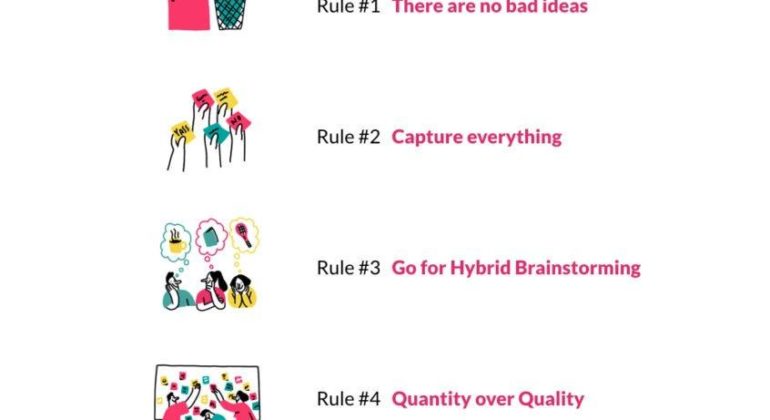4 Rules that will help you ideate like an expert!
1. There are no bad ideas
Key to a good ideation session is that everyone in the room feels comfortable contributing their ideas. How to do so? By asking everyone to kill judgment completely: no negative thinking, no “yes, but”, no nah-faces. If someone hesitates in jotting down an idea, tell them“at this stage, there are no bad ideas”.
It is easier said than done: when developing new products/services/business units, it’s very easy to be tempted by critical thinking. Indeed, often times, initial ideas sound just absurd – and “this can’t work” is the first thing you may have in mind. However, great business concepts are an unusual combination of (not-so) crazy ideas that become meaningful when combined together.
Consider each idea as a piece of a puzzle: however insignificant it could look at first, it may be a piece of a bigger picture later on.
2. Capture everything
In the heat of the action, brilliant ideas might get lost (“it is such a good idea, tomorrow we’ll remember it for sure”. You won’t). There is only one way to solve this: capture every idea on a post-it.
Too many ideation sessions happen during regular team meetings, without the participants being fully aware of being ideating. Ideas are shot verbally and jotted down in the meeting minutes (in the luckiest scenario). Instead, a key element of the best ideation sessions is that each idea is tracked and can be used as a building block in following sessions.
A couple of extra tips: 1) one post-it, one idea. Simple. Don’t try to fit an entire business model in 7×7 cm of paper. 2) Use markers, not pens (it will help you to find the most concise way to describe your idea. Your teammates will love your conciseness). 3) Be visual: if possible, instead of using verbal language, draw a sketch of your idea.
3. Go for Hybrid Brainstorming
Group brainstorming is always better than individual brainstorming, right? Well, not really: research shows thatcombining individual brainstorming with group exercises leads to more and better ideas.
Best solution: “Hybrid Brainstorming”. Individual ideation first, then group ideation. Starting an ideation session with group brainstorming would make the loudest voices in the room set a determined direction (thus narrowing down the breadth of ideas), and frustrate the most creative minds in the room – instead, begin with an individual component. Once everyone has set her/his own approach to solving the problem, move to the group session. Leave enough time to discuss and build upon each other’s ideas.
4. Quantity over Quality
The old adage “Quality over Quantity” doesn’t hold during ideation exercises. There is nothing like thinking about the quality or feasibility of ideas to stop the creative juice from flowing. Read our Idea Hunting guide to get more inspiration. Later on, use Analogy Thinking and Opposite Thinking to broaden the spectrum of possibilities (or find here alist of 10 ideation tools to try).
Selection is important but it shouldn’t be done during creative exercises. Go for quantity and worry about the quality later.
Reference: https://www.boardofinnovation.com/blog/golden-rules-of-ideation/

